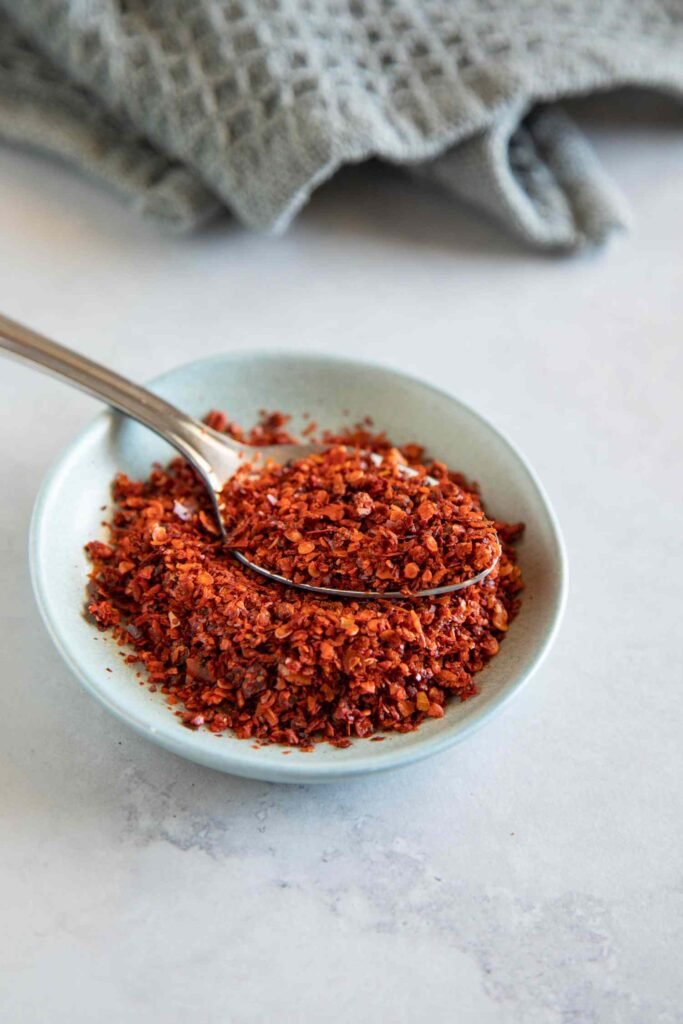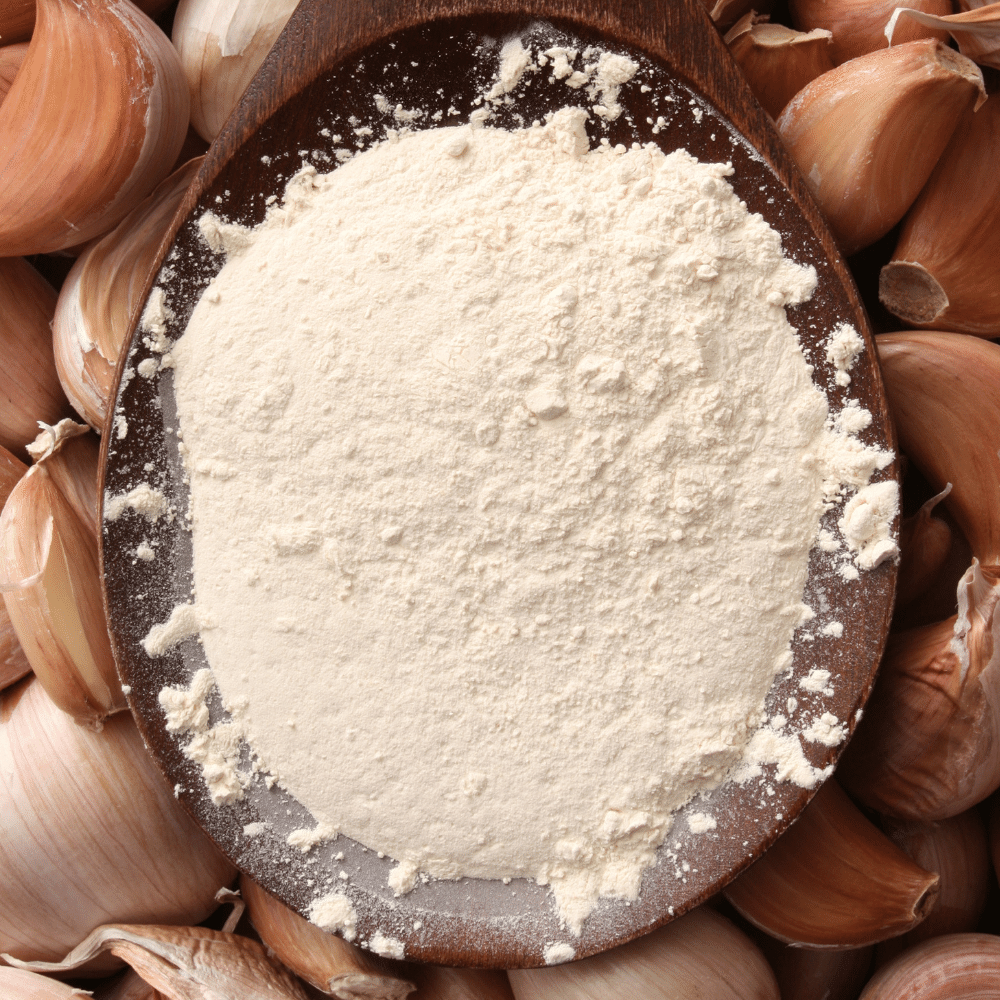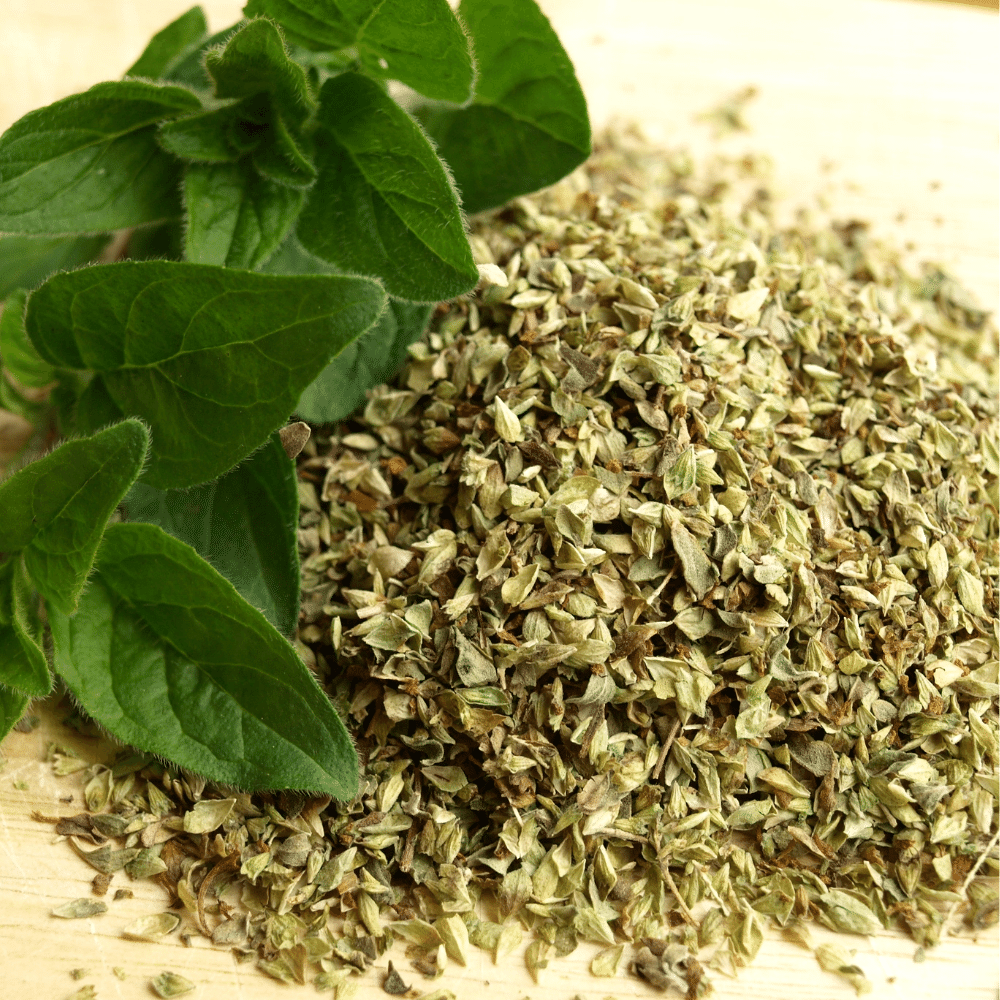Fish soup is a delicious and healthy meal that can be enjoyed any time of the year.
But to make it truly special, you need to find just the right herbs and spices.
From warming ginger to smoky paprika, this collection of my favorite spice blends will take your fish soups from ordinary to extraordinary.
My top 17 choices will help you create flavor-packed bowls of seafood deliciousness that are sure to become favorites in your recipe box!

1. Aleppo Pepper Flakes

Aleppo pepper flakes are great for adding a smoky and slightly sweet flavor to fish soup.
It’s also quite versatile, so it can be used in many other dishes as well.
It adds a unique taste that is difficult to replicate with any other ingredient.
Its flavor profile includes earthy notes combined with the sweetness of raisins and just enough heat to give your dish some kick!
In terms of measurement, use one teaspoon per two servings of soup.
This should provide an adequate level of spice without overpowering the delicate flavors in the soup.
If you want more heat, feel free to increase the amount as desired!
2. Coriander

Coriander is a great addition to fish soup because it adds a wonderful depth of flavor.
Coriander has an earthy and slightly citrusy aroma, which works well with the richness of the fish broth.
It also helps balance out any sour or overly salty notes in the soup.
When adding coriander to your fish soup, use roughly one teaspoon for every four cups of liquid.
This will give you enough flavor without overpowering the other ingredients in your soup.
If you like more intense flavors, feel free to add more!
3. Cumin

Cumin is a popular spice that adds a warm, earthy flavor to soup.
It’s often used in many Mexican dishes and can be found in most grocery stores.
When added to soup, cumin helps bring out the natural flavors of the other ingredients.
It also adds an extra layer of depth and complexity to your dish.
The amount you use depends on how strong you want the flavor to be – usually around 1 tablespoon for every 2-3 pounds of fish will suffice.
Cumin has been used as an ingredient in soups since ancient times and its popularity has not waned since then!
4. Turmeric

Turmeric is an excellent ingredient to add to fish soup because of its health benefits as well as its unique flavor.
In terms of flavor, turmeric adds a warm, earthy taste that pairs nicely with seafood dishes.
It also lends a bright yellow color that looks great in soup!
For fish soups or stews, you should use about 1 teaspoon of ground turmeric per 2 cups of liquid (e.g., broth).
You can adjust this amount depending on your preference for more or less intense flavor.
5. Chili Powder

Chili powder is a great addition to soup as it adds a nice kick of flavor and heat.
It contains various spices, such as dried chilies, garlic, oregano, cumin, and coriander which combine to give the soup an incredible depth of flavor.
The chili powder can also help enhance the other flavors in the soup such as tomatoes or herbs.
When using chili powder in your soup, start with ¼ teaspoon per 2 cups of liquid and adjust according to your taste preference.
You may want to add more depending on how spicy you like your dish!
6. Onion Powder

Onion powder is a great addition to soup because it adds an intense flavor without the hassle of chopping and sautéing onions.
It’s a convenient way to get that rich onion flavor without having to spend time prepping fresh onions.
Onion powder adds an earthy, sweet, and savory depth of flavor to soups like fish soup.
A little goes a long way – just 1-2 tablespoons should be enough for most recipes.
You can always add more if you want a stronger onion taste!
7. Garlic Powder

Garlic powder adds a deep, savory flavor and aroma.
Garlic powder helps to boost the flavor of your dish without having to use too much garlic.
When using garlic powder for soups or stews, you want to add just enough for the desired flavor but not so much that it overpowers everything else.
A good guideline is 1/2 teaspoon per quart of liquid used in your recipe.
As always, you can adjust accordingly depending on how strong you’d like the garlic taste to be!
8. Salt

Salt is an essential ingredient in any soup, including fish soup.
It helps enhance the flavor of the other ingredients, while also adding its own unique flavor to the dish.
Salt helps bring out the sweetness in vegetables and cuts through some of the natural bitterness that can be found in fish.
The amount of salt you should use will depend on your taste preferences and how salty or mild you prefer your soups to be.
I generally recommend starting with about 1 teaspoon for every 4 cups of liquid (this includes stock or water).
Taste as you go and add more if desired.
It’s important not to forget that salt does have a strong presence when it comes to flavoring dishes – so make sure not to overdo it!
9. Dill

Dill is a popular herb used in many types of dishes, especially fish soup.
It adds an unmistakable flavor that is both fresh and slightly sweet.
Its delicate leaves also add texture to the dish, making it more interesting.
In terms of flavor, dill brings out a subtle sweetness that perfectly complements the savory flavors found in fish soup.
It can also give a nice kick due to its slight bitterness which helps balance out the other ingredients in the soup.
When adding dill to your soup, it’s important not to overdo it as too much can overpower the other flavors and make your dish taste overly bitter or pungent.
A good rule of thumb is to use one teaspoon of dried dill per cup of broth or stock for milder soups and up to two teaspoons per cup for richer soups with heavier sauces and lots of vegetables.
10. Oregano

Oregano is a great herb to add because adds an intense, warm flavor.
It’s earthy and slightly minty with hints of citrus, which can cut through the richness of creamy soups.
Oregano also adds a nice depth of flavor that will bring out the subtle flavors in seafood dishes.
When adding oregano to soup, use about 1/2 teaspoon per cup of broth or liquid.
You can adjust this amount depending on your personal preference for the intensity of flavor.
Start with less and then taste the soup before adjusting accordingly.
As with all herbs, fresh oregano has a more intense flavor than dried oregano so you may want to start off using less if using dried oregano leaves instead of fresh ones.
11. Basil

Basil is great for soup because it adds a bright, herby flavor to the dish.
It has an intense aroma that can bring out the flavors in other ingredients and make them stand out.
Basil also helps create a richer broth as its oils are released into the liquid while cooking.
A little bit of basil goes a long way when making fish soup; simply add 1-2 tablespoons of finely chopped fresh leaves or 1 teaspoon of dried basil per quart of broth.
If you’re using dried basil, wait until the end of cooking so that you don’t lose any flavor in the process.
12. Paprika

Paprika is often used in fish soup because it adds a subtle, sweet flavor that complements the fish.
It also enhances the color of the dish, making it more visually appealing.
In terms of flavor, paprika has a slightly earthy taste with a hint of sweetness and smokiness from its chili pepper base.
The amount you use will depend on your preference; if you want a bolder flavor then add more paprika (up to 2 tablespoons) whereas if you prefer something subtler then start with just 1 teaspoon or less.
13. Saffron

Saffron is a great addition to soup because its flavor and aroma are so unique.
It adds a subtle, slightly sweet, earthy flavor that pairs perfectly with the savory flavors of fish and other ingredients in the soup.
When it comes to how much saffron you should use in your soup, it really depends on your taste preference.
Start with just a pinch (about 1/4 teaspoon) for each quart of liquid used in the recipe and adjust accordingly based on how strong or mild you want the flavor to be.
You can always add more but it’s difficult to take away!
14. Allspice

Allspice is a great addition because it adds warmth and complexity.
Allspice has notes of cinnamon, nutmeg, and cloves, which combine together for an earthy and slightly sweet taste that works particularly well with white fish like cod or haddock.
When adding allspice to your soup, start by using about 1/4 teaspoon per 4 servings.
You can always adjust the amount depending on your desired flavor.
15. Fennel Seeds

Fennel seeds have an earthy, sweet yet slightly bitter taste that complements the flavor of fish and other ingredients like onions, garlic, vegetables, etc.
As for how much you should use in your soup, it depends on what kind of soup you’re making and how strong a flavor you want.
Generally speaking, I would recommend starting with 1 teaspoon per 4 servings (2 cups) of your soup – this is just a rough guideline though!
If you find that the fennel seed flavor isn’t prominent enough for your liking then feel free to increase the amount little by little until it’s at your desired level.
16. Mace

Mace is a spice made from the outer layer of nutmeg.
It has a warm and subtle flavor that pairs very well with soup.
Mace adds depth to soups, as it has sweet and savory flavors like cinnamon and pepper combined.
It is an amazing addition to any soup because it brings out its natural sweetness while also adding warmth from its spicy notes.
Additionally, mace contains essential oils which give off a rich aroma that helps make your soup smell even more delicious!
When using mace in soups, start off with small amounts – about 1/4 teaspoon per quart of liquid should be enough for most recipes.
If you want a more intense flavor, you can add up to 1 teaspoon of ground mace per quart of liquid.
However, keep in mind that too much can overpower the other flavors present in the soup.
17. Juniper Berries

Juniper berries are an excellent addition to soups, stews, and sauces because they have a unique flavor that is both sweet and tart.
They add an earthy, pine-like flavor that intensifies the other flavors in the soup. Juniper berries also help to thicken broth or sauce-based soups.
When it comes to how much you should use, it all depends on personal preference since everyone’s taste buds differ.
Generally speaking, 1 teaspoon of dried juniper berries is enough for one bowl of soup.
If you’re using fresh juniper berries, then 2 teaspoons would be a good amount for one bowl of soup.
Related:
15 Must-Have Herbs and Spices For Pork Stew
15 Must-Have Herbs and Spices for Chicken Stew
18 Must-Have Herbs and Spices for the Perfect Lamb Stew
18 Best Herbs And Spices for Butternut Squash Soup
20 Best Herbs and Spices for Chicken Noodle Soup
27 Must-Have Herbs And Spices For Lentil Soup

17 Best Herbs and Spices For Fish Soup
Ingredients
- Aleppo Pepper Flakes
- Coriander
- Cumin
- Turmeric
- Chili Powder
- Onion Powder
- Garlic Powder
- Salt
- Dill
- Oregano
- Basil
- Paprika
- Saffron
- Allspice
- Fennel Seeds
- Mace
- Juniper Berries
Instructions
- Pick your favorite spices and herbs from this collection to add to your soup recipe.
- Prepare the rest of your tasty meal.
- Enjoy in no time!
Hi, I'm Benjamin. I love cooking, long walks, and my girlfriend! Here you’ll find simple and delicious recipes that you can make in 30 minutes or less.

